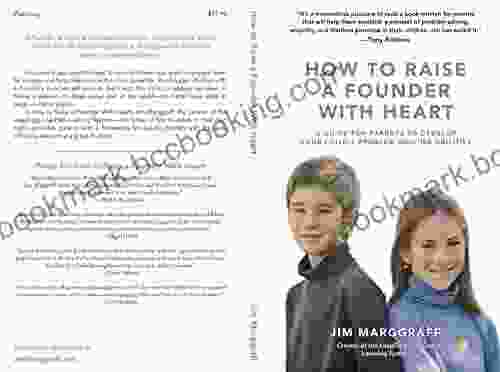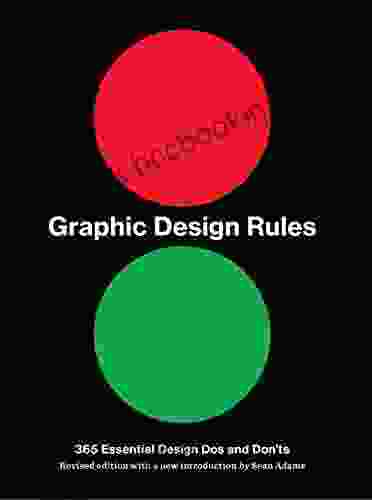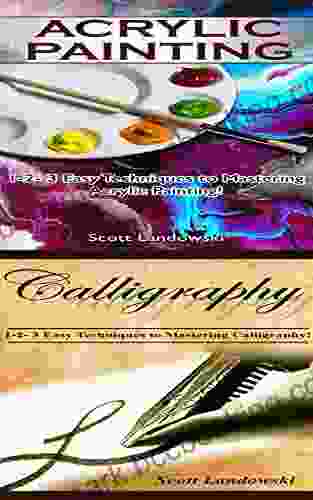Unlock Your Design Potential: Master 365 Essential Dos and Don'ts with Our Indispensable Guide

In the realm of design, knowledge is power. Understanding the fundamentals can make all the difference between amateurish attempts and stunning creations. For those seeking to elevate their design skills, "365 Essential Design Dos and Don'ts" is an indispensable companion. This comprehensive guide offers a year's worth of invaluable tips and insights to help you master the art of impactful and effective design.
Embarking on a design journey begins with understanding the essential principles that form the foundation of successful designs. From understanding the principles of balance and composition to harnessing the power of color theory, this chapter establishes a solid grasp of the building blocks of visual artistry.
- Do prioritize balance: Distribute elements harmoniously to create a visually appealing composition.
- Do utilize contrast: Highlight key elements by juxtaposing light and dark elements or using contrasting colors.
- Do experiment with color: Explore the psychology of colors and their impact on emotions and perceptions.
- Don't overload with elements: Overcrowding the design can create visual clutter and overwhelm viewers.
- Don't ignore white space: Embrace empty spaces as an integral part of design to enhance readability and focus.
- Don't clash with colors: Ensure color combinations are complementary or harmonious to avoid visual dissonance.
Typography is the backbone of effective design, transforming words into visual expressions that convey meaning. This chapter delves into the intricacies of font selection, layout, and spacing, empowering designers to communicate their message with clarity and impact.
4.7 out of 5
| Language | : | English |
| File size | : | 25151 KB |
| Text-to-Speech | : | Enabled |
| Screen Reader | : | Supported |
| Enhanced typesetting | : | Enabled |
| Print length | : | 385 pages |
| Lending | : | Enabled |
- Do choose a font that fits the context: Select a font that aligns with the tone and purpose of the design.
- Do optimize readability: Ensure font size, spacing, and contrast enhance the legibility of text.
- Do experiment with typefaces: Explore different typefaces, such as serif or sans-serif, to create visual interest.
- Don't use too many fonts: Limit font choices to two or three to maintain consistency and avoid overwhelming readers.
- Don't overcrowd text: Provide ample white space around text to enhance readability and prevent eye strain.
- Don't ignore kerning: Adjust the spacing between characters to improve the legibility and visual appeal of text.
Visuals have an undeniable power to captivate and engage viewers. This chapter explores the effective use of images, from selecting impactful photographs to mastering image editing techniques that transform ordinary into extraordinary.
- Do choose high-quality images: Invest in high-resolution, visually appealing images that enhance the overall design.
- Do edit images professionally: Crop, adjust exposure, and enhance colors to elevate the visual impact of images.
- Do consider image placement: Position images strategically to draw viewers' attention to key elements.
- Don't use blurry or pixelated images: Compromised image quality reflects poorly on the design and distracts viewers.
- Don't overload with images: Excessive imagery can clutter the design and overwhelm viewers.
- Don't ignore copyright: Always obtain proper permissions before using copyrighted images.
Layout is the art of organizing content into a visually pleasing and functional arrangement. This chapter covers the principles of hierarchy, grid systems, and whitespace utilization, empowering designers to create layouts that guide viewers through the design effortlessly.
- Do create a visual hierarchy: Organize elements based on importance, using size, color, and placement to draw attention to key elements.
- Do utilize grid systems: Structure layouts using grids to enhance consistency and organization.
- Do leverage white space: Use empty spaces strategically to enhance readability, improve visual flow, and create a sense of spaciousness.
- Don't overcrowd the layout: Excessive content can overwhelm viewers and distract them from the main message.
- Don't ignore alignment: Ensure elements are aligned consistently to maintain visual harmony and enhance readability.
- Don't neglect the margins: Provide ample margins around the edges of the design to prevent a cluttered or cramped appearance.
Color is a powerful tool in the designer's arsenal. This chapter delves into the principles of color theory, exploring the psychological impact of colors, color schemes, and color combinations. Designers will discover how to harness the emotional power of color to evoke desired responses in viewers.
- Do understand color psychology: Explore the emotional associations and cultural implications of different colors.
- Do experiment with color schemes: Create harmonious and impactful color combinations using complementary, analogous, or triadic color schemes.
- Do test color choices: Use color palettes and prototypes to test different color combinations and ensure they are effective across various platforms.
- Don't use excessive colors: Limit color choices to a cohesive palette to avoid visual overload.
- Don't ignore color contrast: Ensure there is sufficient contrast between colors to enhance visibility and readability.
- Don't neglect accessibility: Consider the impact of color choices on individuals with color blindness or low vision.
In the modern digital landscape, user experience (UX) is paramount. This chapter explores the principles of UX design, empowering designers to create user interfaces that are intuitive, engaging, and seamlessly integrate with user needs.
- Do research user needs: Understand the target audience's behaviors, preferences, and pain points through user research.
- Do design for accessibility: Ensure designs are accessible to users with various disabilities and accessibility needs.
- Do test and iterate: Continuously test and gather feedback on design prototypes to refine and improve user experience.
- Don't ignore user feedback: Value user feedback and incorporate it into the design process to enhance usability.
- Don't overcomplicate interactions: Keep interactions straightforward and intuitive to avoid overwhelming users.
- Don't neglect error handling: Handle errors gracefully and provide clear instructions to guide users through any difficulties they may encounter.
Beyond specific techniques, this chapter covers the timeless principles that underlie all effective designs. From the Golden Ratio to the Rule of Thirds, designers will discover the underlying principles that have shaped centuries of design excellence.
- Do embrace the Golden Ratio: Utilize the proportions found in nature to create visually pleasing compositions.
- Do follow the Rule of Thirds: Divide the design into thirds horizontally and vertically to create dynamic and engaging layouts.
- Do prioritize unity: Ensure elements work together harmoniously to create a cohesive and unified design.
- Don't ignore visual balance: Distribute elements evenly to prevent the design from appearing lopsided or unbalanced.
- Don't underestimate the impact of repetition: Repeat key elements to create a sense of rhythm and unity.
- Don't settle for mediocrity: Strive for excellence and continuously seek to refine and improve designs.
"365 Essential Design Dos and Don'ts" is more than just a guide; it's a companion on your design journey. Each tip, technique, and principle empowers you to create designs that resonate with your audience, convey your message effectively, and leave an enduring impression.
Whether you're a seasoned designer seeking to refine your craft or an aspiring creative yearning to make your mark, this indispensable volume will elevate your skills, ignite your creativity, and unlock your potential to produce extraordinary designs.
So, embark on this design adventure today. Open the pages of "365 Essential Design Dos and Don'ts" and let this treasure trove of knowledge guide you towards design mastery.
4.7 out of 5
| Language | : | English |
| File size | : | 25151 KB |
| Text-to-Speech | : | Enabled |
| Screen Reader | : | Supported |
| Enhanced typesetting | : | Enabled |
| Print length | : | 385 pages |
| Lending | : | Enabled |
Do you want to contribute by writing guest posts on this blog?
Please contact us and send us a resume of previous articles that you have written.
 Book
Book Novel
Novel Page
Page Chapter
Chapter Text
Text Story
Story Genre
Genre Reader
Reader Library
Library Paperback
Paperback E-book
E-book Magazine
Magazine Newspaper
Newspaper Paragraph
Paragraph Sentence
Sentence Bookmark
Bookmark Shelf
Shelf Glossary
Glossary Bibliography
Bibliography Foreword
Foreword Preface
Preface Synopsis
Synopsis Annotation
Annotation Footnote
Footnote Manuscript
Manuscript Scroll
Scroll Codex
Codex Tome
Tome Bestseller
Bestseller Classics
Classics Library card
Library card Narrative
Narrative Biography
Biography Autobiography
Autobiography Memoir
Memoir Reference
Reference Encyclopedia
Encyclopedia Jessie Sheehan
Jessie Sheehan Jenara Nerenberg
Jenara Nerenberg Jill Stamm
Jill Stamm Nadine Taylor
Nadine Taylor Jennifer Varnadore
Jennifer Varnadore Jim Freeman
Jim Freeman Kenneth Gjesdal
Kenneth Gjesdal Wil Fleming
Wil Fleming Will Duffy
Will Duffy Ron Jeffries
Ron Jeffries Jessica Yu
Jessica Yu Jesse A Saperstein
Jesse A Saperstein Timothy Phelps
Timothy Phelps Jelena Bogdanovic
Jelena Bogdanovic Jennifer Mccully
Jennifer Mccully Jens Voigt
Jens Voigt Stephan A Hoeller
Stephan A Hoeller Michael Ventura
Michael Ventura Matthew Farrer
Matthew Farrer Jennifer Blair
Jennifer Blair
Light bulbAdvertise smarter! Our strategic ad space ensures maximum exposure. Reserve your spot today!
 Matt ReedStartup Silicon Valley Adventure: The Ultimate Guide to Starting a Successful...
Matt ReedStartup Silicon Valley Adventure: The Ultimate Guide to Starting a Successful...
 Hank MitchellEmbark on an Epic Journey to Beyond the Equator: A Literary Adventure That...
Hank MitchellEmbark on an Epic Journey to Beyond the Equator: A Literary Adventure That... George OrwellFollow ·18.5k
George OrwellFollow ·18.5k Isaias BlairFollow ·11.5k
Isaias BlairFollow ·11.5k Deion SimmonsFollow ·12.6k
Deion SimmonsFollow ·12.6k Russell MitchellFollow ·16.2k
Russell MitchellFollow ·16.2k Bill GrantFollow ·8.3k
Bill GrantFollow ·8.3k Vic ParkerFollow ·11.7k
Vic ParkerFollow ·11.7k Gene PowellFollow ·17.7k
Gene PowellFollow ·17.7k Hugo CoxFollow ·13k
Hugo CoxFollow ·13k

 Patrick Rothfuss
Patrick RothfussGuide for Parents: Unlocking Your Child's Problem-Solving...
As a parent, you...

 Ignacio Hayes
Ignacio HayesThe Good Girls of Al Noor: A Gripping Tale of Hope and...
On March 15, 2019, a...

 Lee Simmons
Lee Simmons50 Games and Activities for All the Turkeys at Your...
Thanksgiving is a time for family, friends,...

 Sean Turner
Sean TurnerRewiring the World: From Edison to Google - The...
A Captivating...
4.7 out of 5
| Language | : | English |
| File size | : | 25151 KB |
| Text-to-Speech | : | Enabled |
| Screen Reader | : | Supported |
| Enhanced typesetting | : | Enabled |
| Print length | : | 385 pages |
| Lending | : | Enabled |











